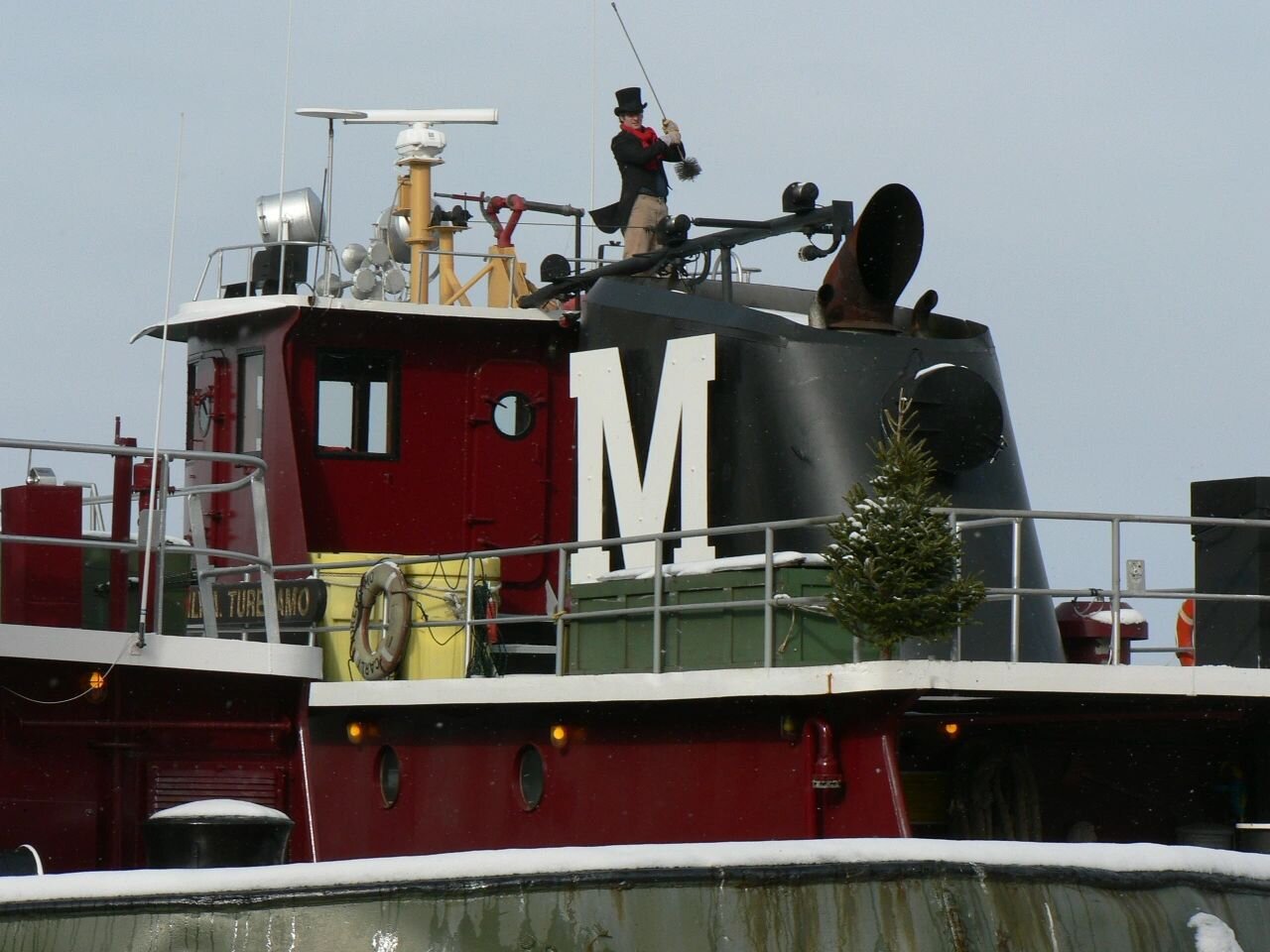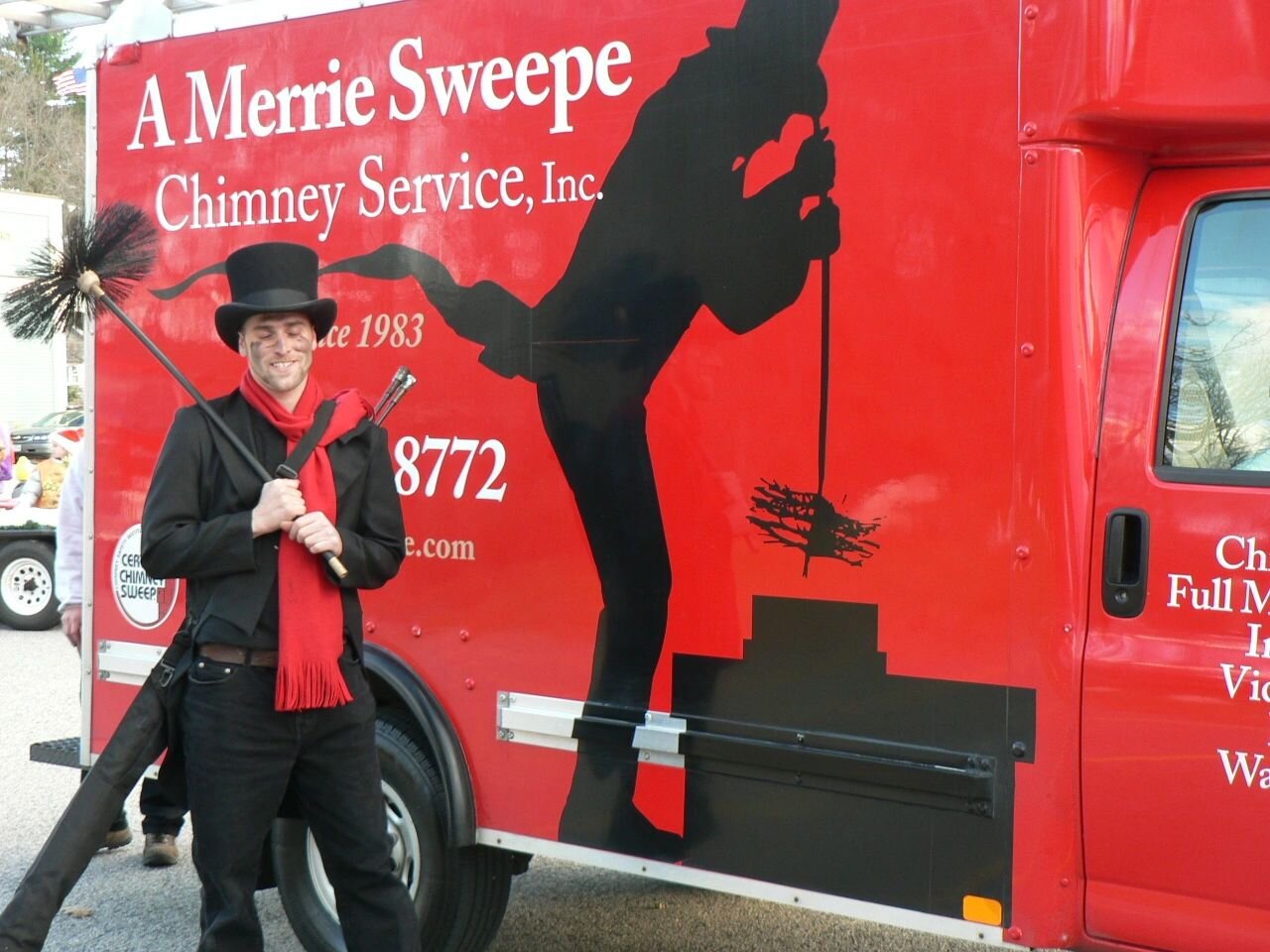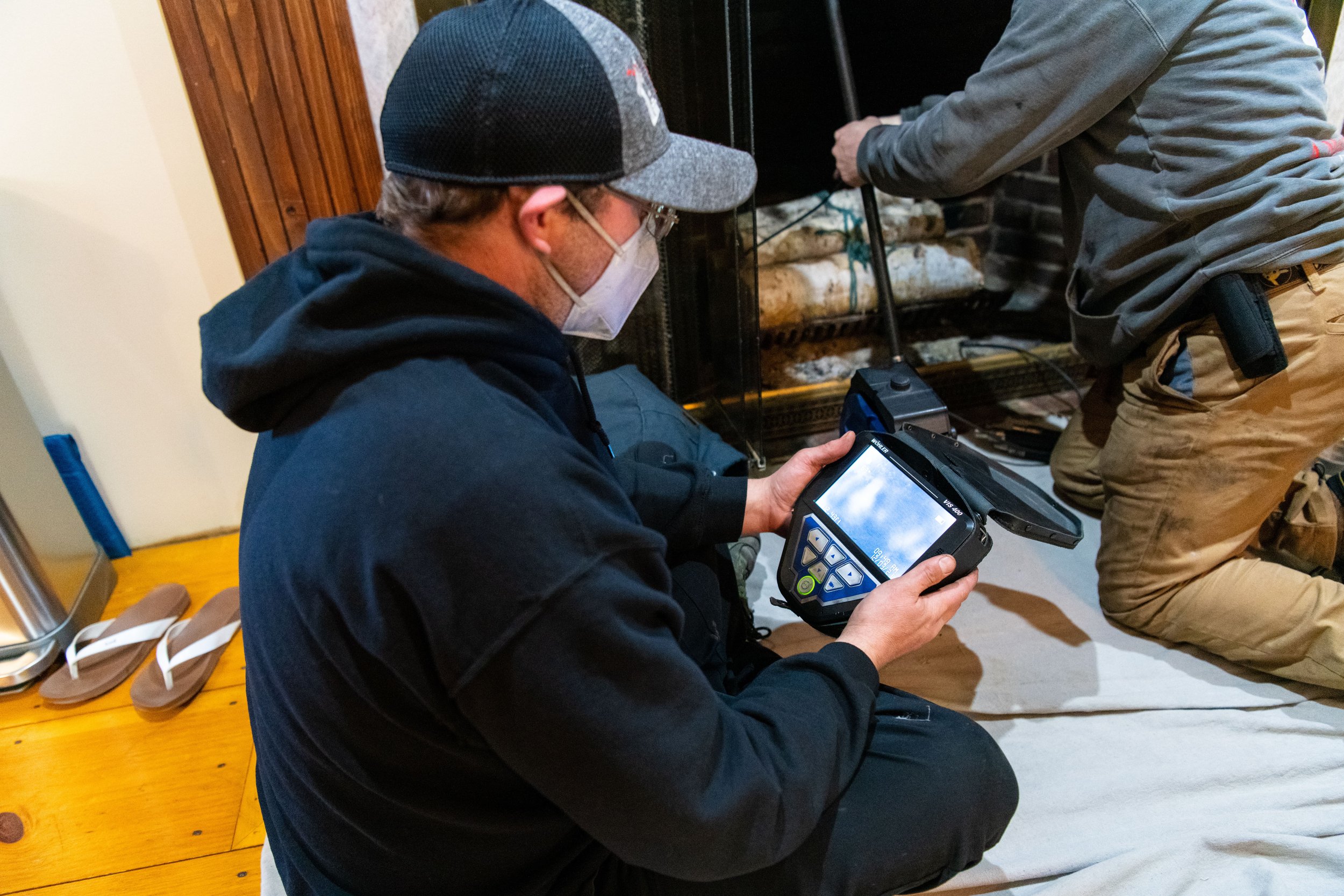Chimney Sweeping
The National Fire Protection Association recommends that all chimneys be at least inspected once a year. Lots of things can happen, besides sooty buildup:
Animals can get inside chimneys and get stuck or build nests.
Masonry deterioration can result in brick collapse and a blocked or poorly drafting flue; or masonry debris can drift downward and gradually mount up to and close off the lowest thimble hole.
Processes of deterioration can reach a point where they are suddenly evident and threatening. This requires early warning regarding unsafe conditions, important repairs and preventative measures needed. Regular inspections can solve this problem and alert you as a homeowner before bad things happen!
Regular inspections are required to maintain warranties!
Our sweep staff are experienced, carefully trained and certified by the Chimney Safety Institute of America (CSIA). They have a wide range of chimney know-how or can put you in touch with other staff specialists for complicated or extreme situations. They are happy to explain their findings and recommendations and summarize what they have done at your house — with a smile and without rushing you. Don't hesitate to express any of your questions or concerns to them!
A chimney cleaning usually results also in a thorough evaluation of all the key facets of your chimney, including use of a checklist, and photographs to show you what conditions at the top are like (we usually go on the roof to complete our evaluation, unless access is too difficult, the weather is horrible or if you prefer that we don't. We are well insured, of course!). The checklist will be discussed with you, and you will be asked to sign it to acknowledge that you understand our basic findings. Specific recommendations may be noted on the checklist and/or on a separate estimate form, usually with expected costs for each repair or upgrade. A video camera can be used to verify or clarify observed damages. Video scanning may cost extra, but is routinely included in the cost of cleaning flues serving wood-fired appliances.
Techniques
Standard sweeping techniques will utilize brushes of varying sizes and stiffness mounted on detachable rods or a long spool — fiberglass or polypropylene. In addition, stubborn glaze or odd flue configurations may require motorized rotary equipment, including plastic whips and steel chains. Severe glaze may require a major "roto clean", with additional charges applying.
Your sweep may also recommend the use of chemical additives to your fires to soften severe glazed creosote deposits caused by your woodstove or fireplace — along with some tips that might be helpful for promoting cleaner burning. An inexpensive magnetic thermometer often plays a key role also in improving burning patterns with woodstoves. Our sweeps have thermometers and appropriate, easy-to-apply chemicals.
Protection
We will use dropcloths, rugs, vacuum systems, and roof ladders as needed and we'll sweep up well. We'll be careful of your yard and roof.
When to Sweep
We highly recommend directly after burning season for our sake and yours!
Discount rates apply.
We are less busy and it's easier for you to get a convenient time more to your choice.
Creosote and sooty deposits often smell in damp summer air; and the longer such damp deposits stay in your chimney, the more acid deterioration takes place.
The weather is more friendly for servicing your chimney.
Our various staff, being less jammed schedule-wise, can accommodate your repair needs more quickly before the weather turns to winter.
The odds of catching us dancing on your roof are much greater!




